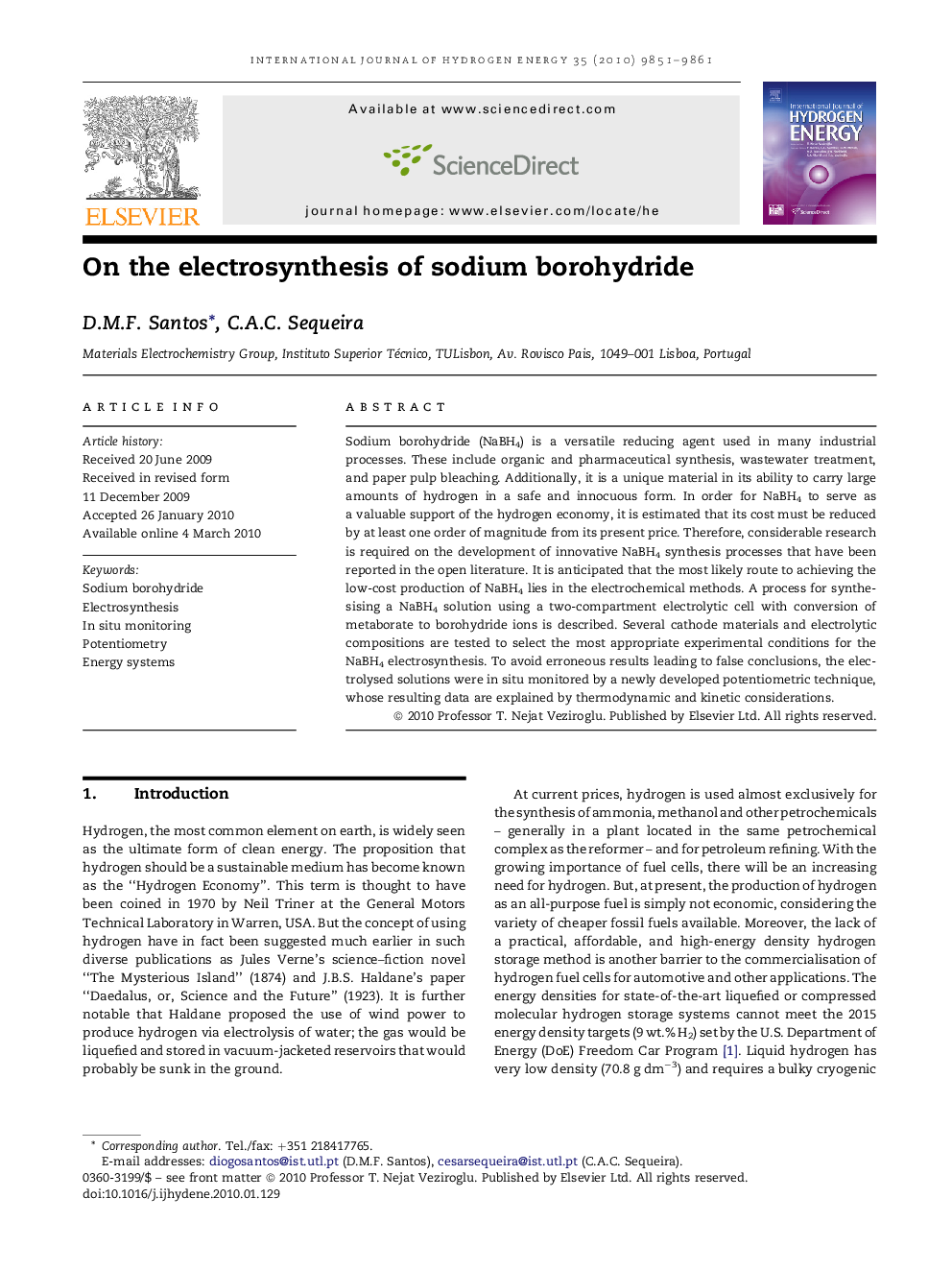| Article ID | Journal | Published Year | Pages | File Type |
|---|---|---|---|---|
| 1280281 | International Journal of Hydrogen Energy | 2010 | 11 Pages |
Sodium borohydride (NaBH4) is a versatile reducing agent used in many industrial processes. These include organic and pharmaceutical synthesis, wastewater treatment, and paper pulp bleaching. Additionally, it is a unique material in its ability to carry large amounts of hydrogen in a safe and innocuous form. In order for NaBH4 to serve as a valuable support of the hydrogen economy, it is estimated that its cost must be reduced by at least one order of magnitude from its present price. Therefore, considerable research is required on the development of innovative NaBH4 synthesis processes that have been reported in the open literature. It is anticipated that the most likely route to achieving the low-cost production of NaBH4 lies in the electrochemical methods. A process for synthesising a NaBH4 solution using a two-compartment electrolytic cell with conversion of metaborate to borohydride ions is described. Several cathode materials and electrolytic compositions are tested to select the most appropriate experimental conditions for the NaBH4 electrosynthesis. To avoid erroneous results leading to false conclusions, the electrolysed solutions were in situ monitored by a newly developed potentiometric technique, whose resulting data are explained by thermodynamic and kinetic considerations.
